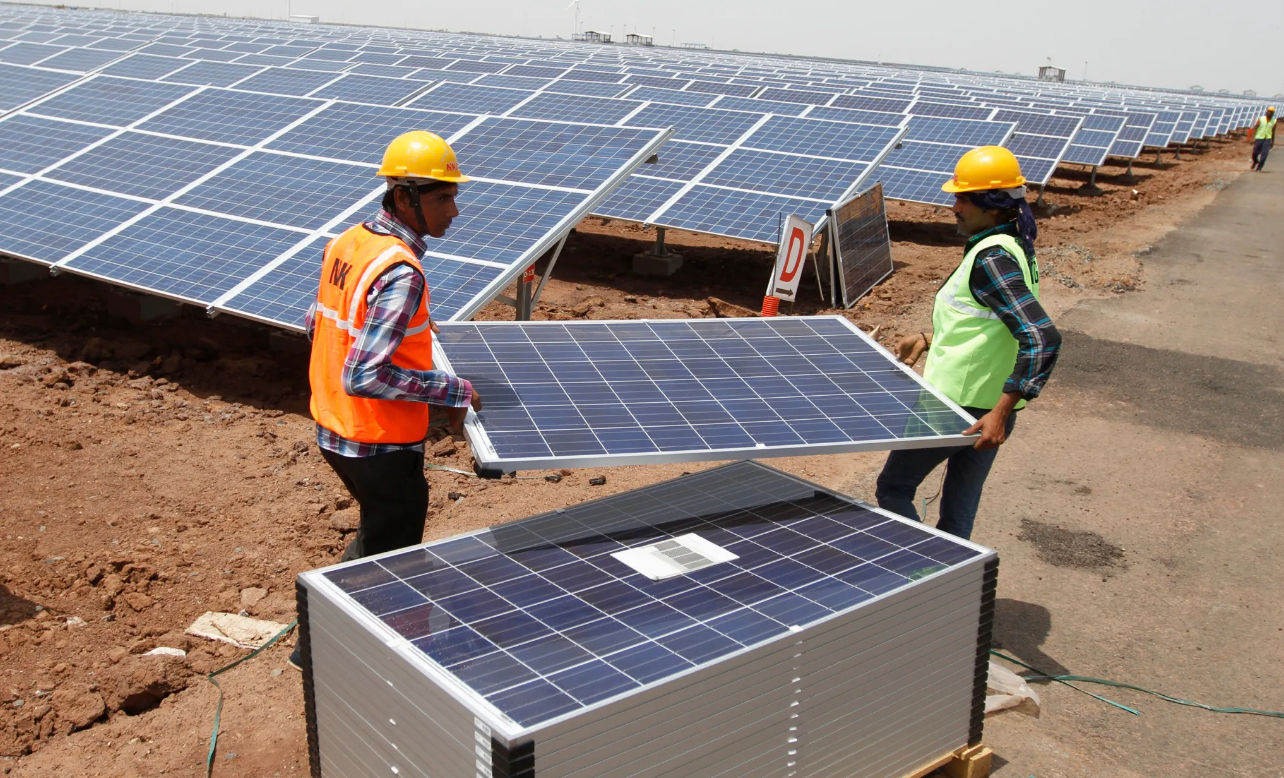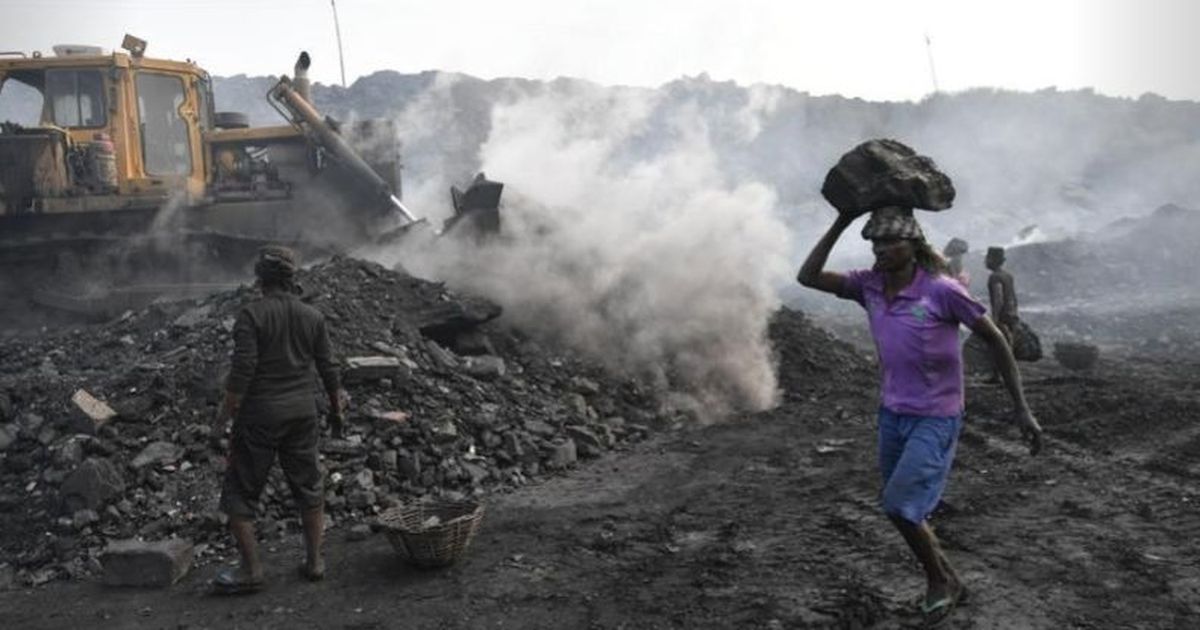India turns a more cautious green
India’s Prime Minister Narendra Modi, expected to win a third-term when India holds its national elections this spring, is among the emerging economies’ most fervent believers in climate change. He sees this an “existential” threat for India and polls show right-wing Hindus, his political base, are the most climate conscious segment of the electorate. But he is also aware that India is still a developing country with a per capita income of less than $3000 and that green transition must be carried out in a politically and socially viable fashion at home. His main accomplishment over a decade of rule has been to quadruple India’s renewable energy capacity, most notably in solar power, and infuse green transition into the public discourse.

The Modi government has traditionally liked to set itself difficult energy goals, in part to put pressure on the often sclerotic bureaucracy and in part to warn domestic interest groups about the direction in which the powerful Indian leader plans to go. However, the fallout of the Ukraine war, limited supplies of critical minerals and a continuing problem of insufficient green financial flows have meant that much of the original climate strategy of the government has had to be reworked. In the meantime, India has shifted back to its traditional energy fuel, coal, and is now declaring that “energy security” must be the government’s priority for the near term.
At COP26 (Glasgow, 2021) Modi had announced a climate policy with five central elements and dubbed the overall plan Panchamrit (“five nectars”). These, drawn from the country’s revised 2022 nationally determined contribution, were:
- Increasing non-fossil fuel capacity by 500GW by 2030.
- Ensuring 50 per cent of its energy requirements to come from renewable energy by 2030.
- Reducing total projected carbon emissions by one billion tonnes from now to 2030.
- Reducing the carbon intensity of the economy by 45 per cent by 2030, over 2005 levels.
- Achieving the target of net zero emissions by 2070.
While these targets have been easy to announce and the deadlines are far away, India’s near-term path to these goals is increasingly unclear.
Read also: India’s decarbonization and its wider economic goals
The original government strategy, in its broadest sense, was two-fold. One goal was a transitioning of heavy industry towards liquid natural gas and eventually green hydrogen. The other was to ramp up solar power with accompanying battery storage and use that to power households at a low price level.
It has since become obvious that battery storage is going to be a crucial bottleneck. Simply put, there are not enough critical minerals to make batteries for such a huge solar program as well as feed the storage requirements of electric vehicles, let alone the storage demand of data centers and other hardware elements of India’s digital economy. At one point last year, it was calculated that India had 61,000 MV of installed solar capacity but less than 600 MV of storage to go with it. Even if batteries were somehow procured, their cost would make solar power too expensive for residential use.
Amid all this, an additional problem arose when the start of the Ukraine war drove up global fuel prices, causing food and fertilizer inflation to surge in energy-importing nations like India. This was also a major setback for India’s climate ambitions as it forced the government to scramble for the cheapest energy source it could find to dampen the surge in inflation that followed. That source was obvious: coal. The Modi government, reluctantly but inevitably, returned to thermal coal to fire an economy that was racing at 7% GDP growth per year while keeping power prices at politically acceptable levels.
New Geoeconomics – all the dossiers
More radical was the decision to repurpose much of the excess solar power to electrolyzing water and creating green hydrogen. Though that still remains nascent as the necessary infrastructure to transport and store hydrogen remains lacking, the Modi government announced that industries like steel, non-ferrous metals and refineries would have to switch to green hydrogen within a few years. It also doubled down on natural gas, though part of that will be used for fertilizer production. A new policy to encourage carbon sequestration is expected to be announced after the general elections – the idea being that this would compensate for gas’s mild carbon content.
The government continues to cast around for a cheap but green energy source for residential homes. It has floated a number of trial balloons. The most commonly heard is small modular nuclear reactors (SMRs), based on an experimental nuclear reactor model of about 300 MW but which generates low radiation and minimal proliferation risk. SMRs would serve like zero-carbon battery packs, the idea being to distribute them by the hundreds across the landscape. India has signed SMR cooperation agreements with a host of countries, including Japan, the United States and France. But the technology remains experimental and many years away from commercial reality. As a stopgap, the Modi government expanded its existing initiatives to promote rooftop and distributed solar power over the next few years. Even this will be difficult to scale up to the level of the original mega-solar parks that were envisaged.
Even if solar plus storage had been viable, however, India faces another problem of finance. Indian think tanks like the Council of Energy Environment and Water have estimated that the country would need $10 trillion to become a net-zero economy by 2070. India had hoped that Western capital would flow into its economy and support its green ambitions. For a number of reasons, the money has fallen far short of expectations. India receives about a quarter of the green finance that is required and estimates say it will face an annual shortfall of $170 billion for this sector until 2030. One reason for this is the chronic red ink finances of India’s electricity sector because of state-run boards that set power prices at below market level prices, ensuring private investment into the sector is minimal. The other is simply an overall preference by private investors to put their money in the true and tested markets of the developed world rather than the more risky ones of the South.
This was one reason why India made a concerted diplomatic effort when it chaired the G-20 in 2023 to hammer out an international agreement to expand the financial resources of the world’s 200 plus development banks and repurpose more of their funds to green energy investments. This stance was endorsed in the G-20 context but will take more effort to be converted into a political and economic reality. Even if the targets are accomplished, India’s green financial needs will still remain unsatisfied.
Last year’s energy and inflation crises proved such a shock to the Modi government that it decided it would have to regress both rhetorically and in practice on its climate policy. Hence energy security was put ahead of carbon reduction, there was a renewed push to make India self-sufficient in coal mining, and the country recommitted to oil and gas imports from across the world. India also took up cudgels on behalf of developing countries, making the case for the continuing use of coal by poor countries and criticizing the West for failing to deliver on pledged amounts of green investment in the South. India pointedly rejected a Group of Seven offer to provide $ 15 billion dollars under its Just Energy Transition Partnerships, designed to help emerging economies green their energy sectors, because it required a complete phase out of coal on a fixed calendar.
Prime Minister Modi, going by every opinion poll available, is set to win a third term this spring. He has yet to make a clear articulation of his climate policy and his party, the Bharatiya Janata Party, has yet to release its manifesto – normally a good guide to the BJP’s priorities. However, a fair amount of continuity can be expected given the near certainty of Modi’s return. Coal presently represents 55% of India’s energy mix: the best that can be hoped for right now is holding the economy at that level for a year or two.

Four policy elements are most likely to prevail. First the government will continue to use fossil fuels as a short-term energy source until reasonably clear alternatives are available. But this would also be combined with a determination to reduce overseas dependency on energy supplies. India will be even aggressive about trying to attract foreign investment into domestic gas production though it will be largely focused on expanding coal production given its natural endowments.
Second, these alternatives would include pouring money into green hydrogen production and infrastructure – somewhat ambitiously India hopes to eventually export green hydrogen. Small modular reactor technology will probably be pursued as a plurilateral action in conjunction with other governments. India’s first National Green Hydrogen Mission has been allotted Rs 200 billion for its first phase though the key idea is to attract private sector funding.
Third element, pursue green finance through a number of avenues including sovereign green bonds, development bank finance, and so on. But the ultimate goal would to create a financial structure that would de-risk large-scale private capital into green projects.
Fourth, in a slightly related policy, the Indian government is determined to make the country a base for the manufacture of green products, partly to maintain future competitiveness but also to try and reduce dependency on Chinese imports. The most interesting one is an expected national EV manufacturing policy to promote low-cost EV manufacturing in the country. It has already attracted the interest of Tesla and a cluster of Japanese and Korean carmakers, besides domestic producers like Tata Motors.
Read also: India and China: the uneasy partnership between the Asian giants
The real question is how long will it take for the Modi government to return to its original and more ambitious green path. This will depend on a number of variables, the most important being finding a means to provide renewable energy to households at a politically acceptable price. Industry has a number of green energy paths to take and will be less concerned about costs. Modi will want to return to a more ambitious path as soon as possible but will be constrained by technology, finance and geopolitics. The hope is that some of these factors will flip in a manner that will make it easier for him to return to the climate fast track.
